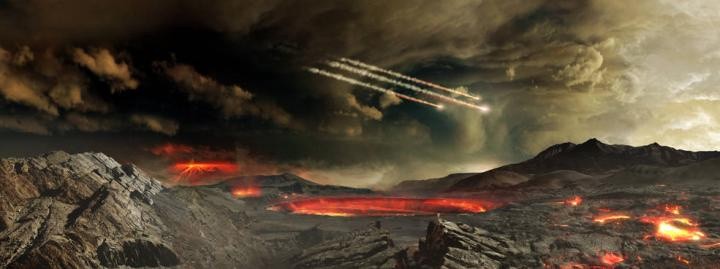A new study indicates that when the dinosaur-killing asteroid struck with Earth 66 million years ago, vast amounts of sulfur were hurled into the stratosphere - volumes far greater than previously imagined.

The study was published in the journal Proceedings of the National Academy of Sciences on Monday (March 21).
Massive Sulfur Cloud
According to the study, this massive cloud of sulfur-bearing gases, once aloft, obscured the Sun and chilled Earth for decades to centuries before falling as dangerous acid rain and altering the chemistry of the seas for tens of thousands of years.
Co-researcher James Witts said, a lecturer in the School of Earth Sciences at the University of Bristol in the United Kingdom, said that the findings reveal that experts overestimated the quantity of sulfur produced by the asteroid impact.
As a result, the climatic change connected with it was perhaps considerably higher than anticipated
Sulfur Rain

The fact that sulfur continued to rain down on Earth's surface for so long may explain why life, particularly marine life, took so long to recover because some of the sulfur that landed on land would have washed away into the oceans, according to Witts.
The researchers' discovery was purely coincidental. Witts stated that it was not in the least bit planned.
The researchers intended to investigate ancient shells' geochemistry along the Brazos River in Falls County, Texas. This unique location was submerged during the end-Cretaceous extinction when non-avian dinosaurs perished.
It's also not far from the Chicxulub crater on Mexico's Yucatan Peninsula, struck by a 6-mile-wide (10-kilometer) asteroid.
The scientists took a few sediment samples at the location, something they hadn't intended on.
The samples were taken to the University of St Andrews in Scotland, where co-author Aubrey Zerkle, a geochemist and geobiologist, studied the various sulfur isotopes or sulfur variants with varied numbers of neutrons in their nuclei.
According to Witts, the researchers discovered "a unique signal" - the sulfur isotopes' masses showed minimal fluctuations. Mass changes occur when sulfur enters the atmosphere and interacts with ultraviolet (UV) light.
Results
According to Witts, that can only happen in two scenarios: either in an environment with no oxygen or when there is so much sulfur in the atmosphere that it has gotten extremely high up into an oxygenated atmosphere.
The Earth is around 4.5 billion years old, and an oxygenated atmosphere has engulfed it since about 2.3 billion years ago.
"At least in sediments that aren't on the Earth's poles," Witts said, "we're the first people to see this type of behavior in much more recent periods."
According to Witts, the presence of this signal in Cretaceous marine rock indicates that there must have been a lot of sulfur in the atmosphere following the impact. And, of course, this has major implications for climate change since sulfur aerosols, as we know from recent volcanic eruptions, cool the atmosphere.
The Yucatan Peninsula's sulfur-rich limestone provided a large portion of the sulfur.
"Perhaps if the asteroid had landed someplace else, there wouldn't have been as much sulfur released into the atmosphere, and the climatic shift that followed wouldn't have been as severe," Witts said. Therefore the extinction event wouldn't have been as devastating.
Climate Simulations
According to climate simulations, the sulfur aerosols entering Earth's atmosphere after the asteroid impact would have converted into sulfate aerosols, causing 3.6 to 14.4 degrees Fahrenheit (2 to 8 degrees Celsius) cooling of the Earth's surface for a few decades following the impact. However, because the sulfur content was larger, the climatic impact might have been even more catastrophic, according to the new findings.
Related Article : Over 80,000 Plant Species at Risk of Extinction Because "Humans Don't Find Them Useful"
For similar news, don't forget to follow Nature World News!
© 2025 NatureWorldNews.com All rights reserved. Do not reproduce without permission.





